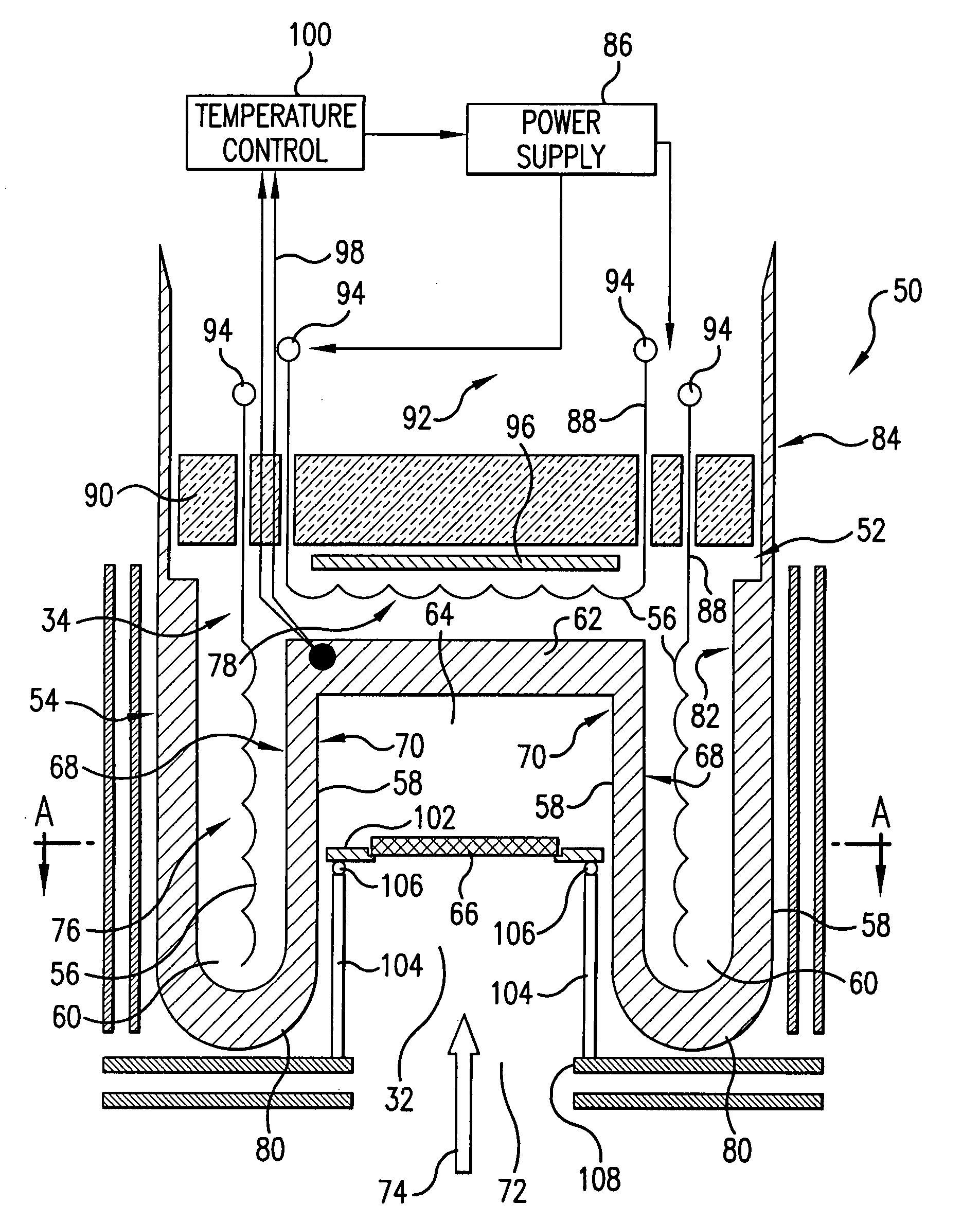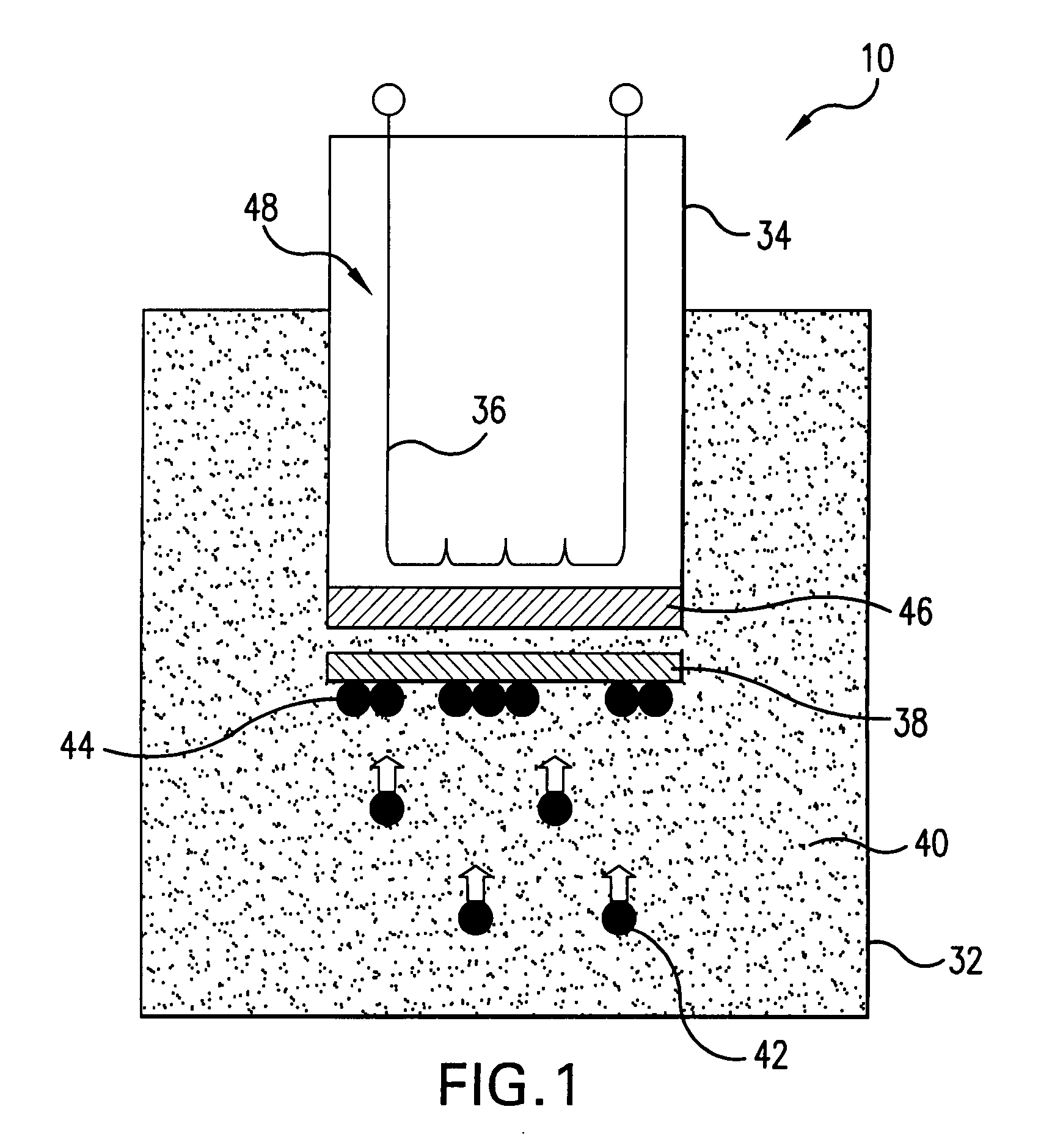Substrate heater for material deposition
a heater and substrate technology, applied in the field of coating deposition, can solve the problems of significant limitations on the choice and design of heaters, affecting coating properties, and inapplicability of transfer by convection in most film deposition conditions, and achieve the effect of wide dynamic range of operational parameters
- Summary
- Abstract
- Description
- Claims
- Application Information
AI Technical Summary
Benefits of technology
Problems solved by technology
Method used
Image
Examples
Embodiment Construction
[0036]Referring to FIG. 1, illustrating the concept of the present substrate heater, a system 10 for material deposition includes a process chamber 32 and a heater chamber 34 separated each from the other by a high-temperature and oxidation resistant material which is tolerant to vacuum conditions. The heater chamber 34 contains a heating filament 36 and is filled with a gas suitable for the heating filament or it may be open to air.
[0037]A substrate 38 is positioned in the process chamber 32 which is filled with a process gas 40. The condensable particles (atoms / ions) 42 in the process chamber 32 flow to the substrate 38 and condense on the surface thereof to form a deposited material 44. The heat from the filament 36 is transferred to the substrate 38 through a hot (radiating) surface 46 formed from a high-temperature and oxidation resistant material, such as, for example, Inconel. By using the radiating surface 46, a uniform heating of the substrate 38 to high process temperature...
PUM
| Property | Measurement | Unit |
|---|---|---|
| Length | aaaaa | aaaaa |
| Temperature | aaaaa | aaaaa |
| Volume | aaaaa | aaaaa |
Abstract
Description
Claims
Application Information
 Login to View More
Login to View More - R&D
- Intellectual Property
- Life Sciences
- Materials
- Tech Scout
- Unparalleled Data Quality
- Higher Quality Content
- 60% Fewer Hallucinations
Browse by: Latest US Patents, China's latest patents, Technical Efficacy Thesaurus, Application Domain, Technology Topic, Popular Technical Reports.
© 2025 PatSnap. All rights reserved.Legal|Privacy policy|Modern Slavery Act Transparency Statement|Sitemap|About US| Contact US: help@patsnap.com



